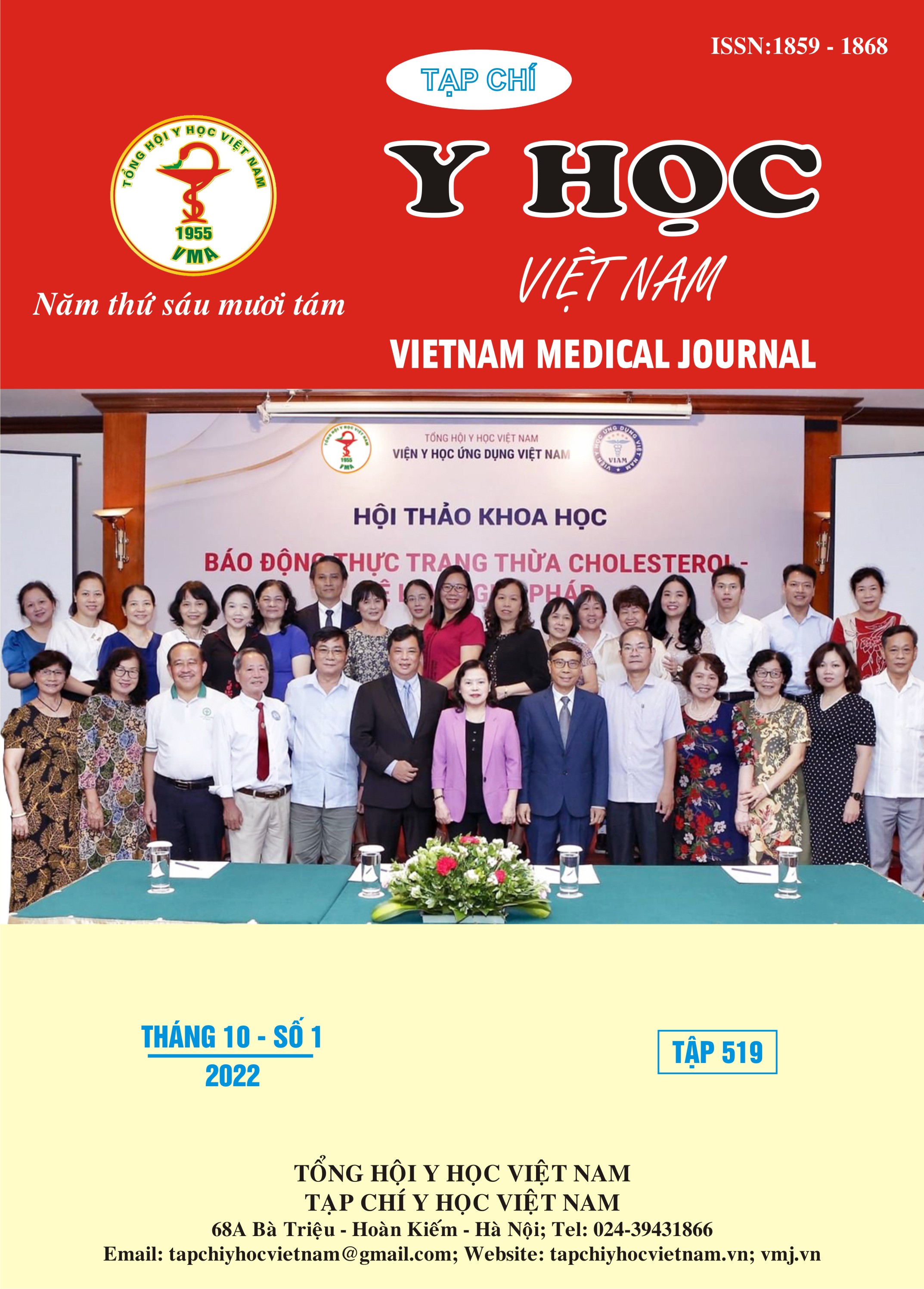CLINICAL, PARACLINICAL AND IMAGING CHARACTERISTICS OF HEPATOCELLULAR CARCINOMA PATIENTS UNDERGOING ULTRASELECTIVE CONVENTIONAL TRANSARTERIAL CHEMOEMBOLIZATION INTERVENTION AT NATIONAL CANCER HOSPITAL
Main Article Content
Abstract
Objectives: To describer some Clinical, Paraclinical and imaging Characteristics of hepatocellular carcinoma patients undergoing ultraselective conventional transarterial chemoembolization intervention at National Cancer Hospital- Tan Trieu, from September 2021 to June 2022. Subjects and research methods: Uncontrolled clinical trials study on 50 patients with confirmed diagnosis of hepatocellular carcinoma who received ultra-selective chemotherapy embolization. Results: (1) Average age of study subjects 61.56 ± 9.57; male to female ratio: 11.5/1; history of hepatitis B was 82%. (2) Pre-intervention AFP rate < 20 ng/ml accounted for 40.0%. (3) Imaging features: Right lobe tumor (78.0%), lesion 01 accounted for 68.0%, average tumor size was 27.58 ± 11.28 mm; 98.0% of tumors had reduced in density and strongly enhanced on computed tomography 72.0%; high degree of angiogenesis on DSA was 74.0%. (4) The source of blood vessels supplying the tumors: came from the right hepatic artery 78.0%, from the extrahepatic arteries: the right inferior diaphragmatic artery 12.0%. Conclusion: The age of hepatocellular carcinoma patients was mostly middle-aged, male accounted for the majority, has a history of hepatitis B; a small percentage did not increase AFP before intervention. The majority of tumors were in the right lobe of the liver, decreased in density and strongly enhanced, and had a high degree of angiogenesis on computed tomography and DSA. The source of the artery supplying the tumors: most of the right hepatic artery, from the extrahepatic artery, the right inferior diaphragmatic artery was common.
Article Details
Keywords
Hepatocellular carcinoma (HCC), ultraselective conventional transarterial chemoembolization
References
2. Miyayama S., Yamashiro M., Ikeda R., et al. (2021). Efficacy of Superselective Conventional Transarterial Chemoembolization Using Guidance Software for Hepatocellular Carcinoma within Three Lesions Smaller Than 3 cm. Cancers (Basel), 13 (24).
3. Yang D., Hanna D. L., Usher J., et al. (2014). Impact of sex on the survival of patients with hepatocellular carcinoma: a Surveillance, Epidemiology, and End Results analysis. Cancer, 120 (23), 3707-3716.
4. Thái Doãn Kỳ (2015). Nghiên cứu kết quả điều trị ung thư biểu mô tế bào gan bằng phương pháp tắc mạch hóa chất sử dụng hạt vi cầu DC Beads. Viện Nghiên cứu Khoa học Y dược Lâm sàng 108.
5. Đào Việt Hằng (2016). Đánh giá kết quả điều trị ung thư biểu mô tế bào gan bằng đốt nhiệt sóng cao tần với các loại kim được lựa chọn theo kích thước khối u, Luận văn Tiến sĩ y học, Đại học Y Hà Nội.
6. Lammer J., Malagari K., Vogl T. (2010). Prospective randomized study of doxorubicin-eluting-bead embolization in the treatment of hepatocellular carcinoma: results of the PRECISION V study. Cardiovasc Intervent Radiol, 33 (1), 41-52.
7. Tandon P., Garcia-Tsao G. (2009). Prognostic indicators in hepatocellular carcinoma: a systematic review of 72 studies. Liver Int, 29 (4), 502-510.
8. W R Stevens, C D Johnson, D H Stephens (1994). CT findings in hepatocellular carcinoma: correlation of tumor characteristics with causative factors, tumor size, and histologic tumor grade. Radiology, 191 (2), 531-537.
9. Phùng Anh Tuấn. (2018). Nghiên cứu đặc điểm hình ảnh ung thư biểu mô tế bào gan trên chụp mạch số hóa xóa nền. Tạp chí Y dược học Quân sự. 2018:67-71.


